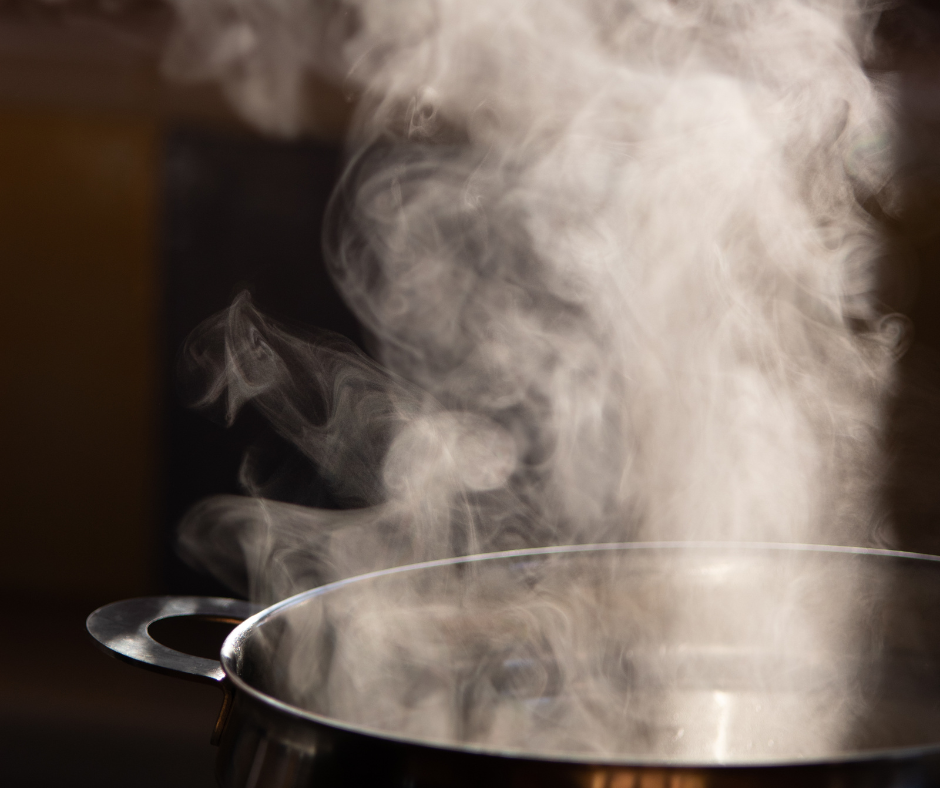Boiling Hope: How My Grandmother Uses Steam to Heal More Than Just Colds
- Huma K.
- Sep 16
- 4 min read
✍️ Editor’s Note
Steam rises, carrying with it more than warmth — it carries memory, comfort, and resilience. In this essay, writer Huma Khurshid reflects on her grandmother’s ritual of leaning over a pot of boiling water, herbs, and breath. What began as a simple remedy for colds unfolds into a cultural thread that connects kitchens in Pakistan, hammams in Turkey, and steam rooms around the world, showing how one practice heals both body and spirit.
I can still recall the scene with a heavy steel pot bubbling on the stove, steam rising in thick clouds, and my grandmother gently pulling me close with a cotton shawl.
“Breathe, beta,” she would say softly. “This is not just for your nose, it is for your whole body.”
At the time, I thought it was only about relieving the congestion from yet another winter cold. But with age, I came to realize she was teaching me something bigger: that healing was never only about symptoms, but about comfort, care, and resilience.
The Ritual of Steam
Whenever someone in our family caught a cold or flu, my grandmother would prepare what she called boiling hope. She would fill a deep pot with water and let it roll into a vigorous boil. Into the bubbling water, she added simple household herbs, fresh mint leaves if they were in season, or ajwain (carom seeds) and fennel if nothing else was available. As the fragrance filled the room, she placed the pot carefully on the floor, covered my head and hers with her shawl, and together we leaned over the steaming cloud.
She would hum quietly while guiding my breathing: slow inhales, deep exhales.
“The herbs make the air strong,” she explained, tapping the side of the pot.
What I remember most is not just the warm mist opening my airways, but the way she made the moment feel safe and shared. Even when I was restless, she kept me there long enough to sweat lightly, saying,
“The body releases its heaviness with the steam.”

More Than Just Medicine
Looking back, I realize that these sessions were never only about colds but small rituals of connection. The kitchen turned into a healing space, and my grandmother turned an ordinary pot of water into a tool of resilience. Often, siblings or cousins would gather too, waiting for their turn under the shawl. She believed that steam carried more than herbs; it carried the strength of family presence.
“You heal better when you are not alone,” she would often remind us.
Even now, I find myself returning to this ritual during stressful times, not only when I am unwell. A pot of boiling water becomes a reminder of her voice, her patience, and the idea that wellness can be simple yet profound.
Echoes Across Cultures
Years later, I learned that what seemed like a small household remedy was part of a much larger cultural story. In Turkey, hammams, traditional steam bathhouses, have been used for centuries not just for cleansing, but for social and emotional renewal. Families and communities gathered there, much like mine gathered around my grandmother’s steaming pot. The hammam was as much about belonging as it was about health.
In today’s modern gyms and spas, steam rooms continue this tradition in a new form. Athletes sit in tiled chambers to relax their muscles, professionals unwind after long workdays, and many people still use steam to “sweat out” both physical and mental strain. The settings are different, but the essence is remarkably similar: steam is not just water vapor; it is ritual, release, and renewal.
What Has Changed and What Remains
My grandmother’s practice was humble compared to the marble rooms of a Turkish hammam or the glass doors of a gym steam room, but the principle is the same. It shows how cultures across the world, regardless of resources, recognize the healing power of steam.
Today, I still replicate her method whenever I feel the weight of congestion or fatigue. Sometimes I use a towel instead of her shawl, and sometimes I add eucalyptus oil in place of ajwain. The practice has shifted slightly with time, but its essence and her belief in the restorative power of steam remain. It is not only a remedy for the body, but also a comfort for the spirit.
A Legacy of Care
My grandmother never called it therapy. She never described it in scientific terms. For her, it was common sense, carried forward through generations. But in that simplicity lies its strength. She knew that steam heals more than colds; it heals the invisible burdens of life.
As I sit with a bowl of steaming water today, I feel her wisdom echo in each breath. It reminds me that wellness is often hidden in the smallest, most ordinary rituals. And just as Turkish hammams or modern steam rooms preserve this tradition on a grand scale, I carry forward her version, a pot of water, a handful of herbs, and the shawl that turned steam into a symbol of hope.
About the author: Huma Khurshid is a writer and health sciences researcher based in Pakistan, with a deep interest in traditional wellness practices and intergenerational healing.








































































































